Blog post -
Innovative technology - Fogo Facade Fire Curtain
Recent still hot topic: façade fires in UAE. 2013 was the year when flammable composite façade tiles were finally banned and installation of them was stopped. Flammability of facades became a major issue. Considering that we have approximately 80% of Dubai high-rise buildings with high risk of fire spread by façade tiles surface.
Specialists agree that extinguishing of flammable facades is a mission impossible. Lots of opinions are spread out into the media about what measures should be taken to solve this issue. How to maintain the legend of safety/security while living in high rise buildings of UAE.
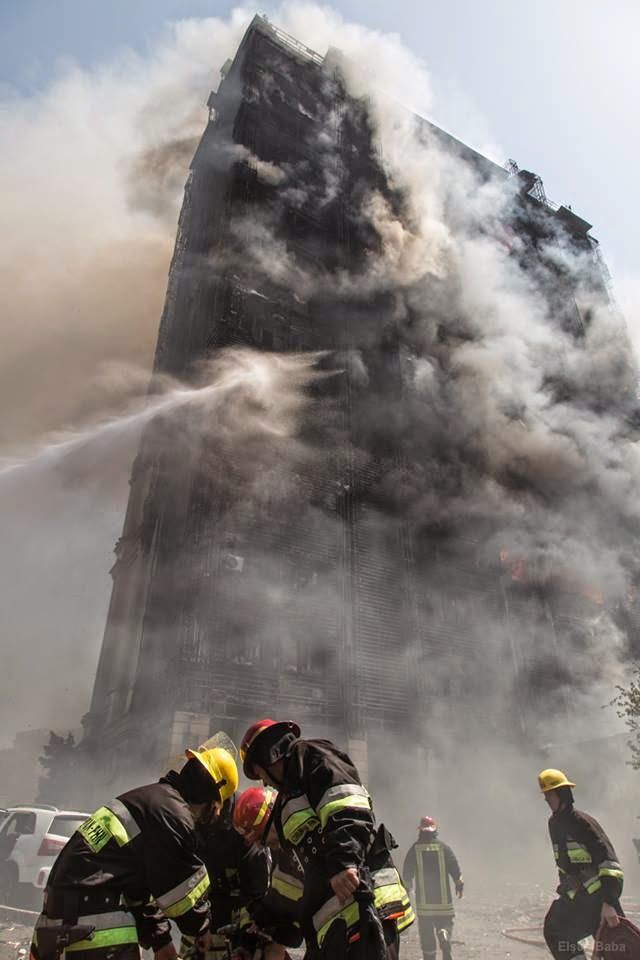
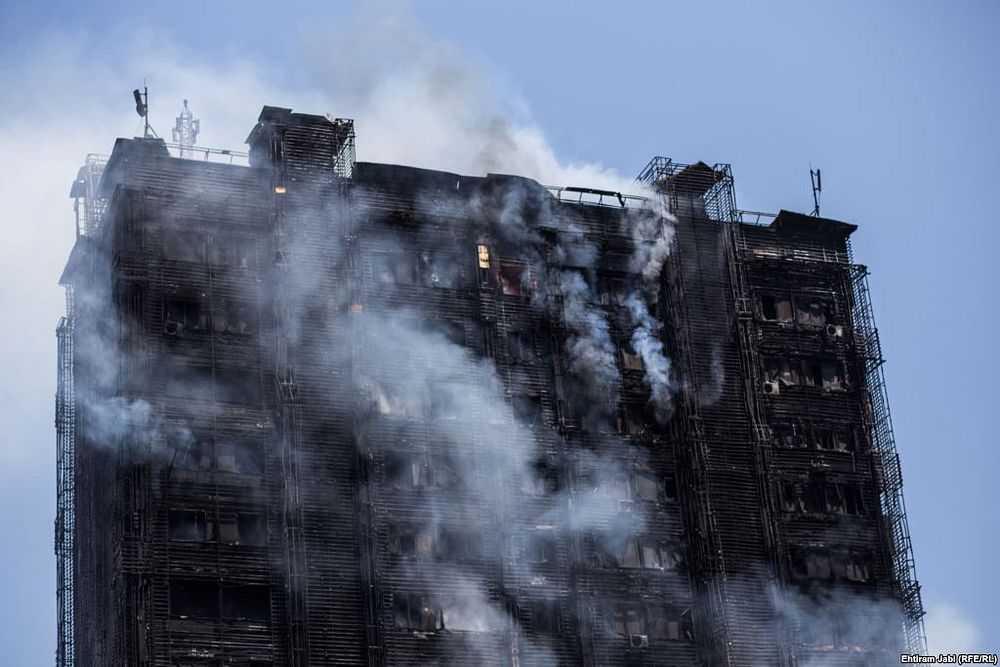
First of all, what is really worth mentioning is that Civil defence of UAE has made a really good job while informing people about fire dangers and requiring / controlling evacuation drills to perfection. People are getting to be more aware of the dangers and are training mainly in office buildings, sometimes – in apartments.
What is really important to understand is that people’s actions during evacuation at work and at home differs completely. They have nothing to leave at the office accept their work. They can easily grab a tab or a pc with the most vulnerable information and head towards the nearest Evac exit.
Apartments contain all the most valuable things (money, jewellery and etc) in peoples life. All the dearest people (sometimes home animals) are also living in the same apartment. All the things and dearest ones are very hard ones to leave during the evacuation. Everyone knows – fire leaves nothing. No insurance will compensate the “moral-inner” value of memorable things like grandmothers gifted jewellery or great-grandfathers watch, gifted sculptures or paintings. It seems funny but You’d be surprised how much “entity” people have in life and try to take it while evacuating from the building on fire. Of course it takes time. It takes huge, huge amount of time which is wasted. Its wasted at the moment when it is very much needed.This is simple and ordinary human nature. That is why no Civil Defence rescue unit can rely on theoretically successful evacuation without their help.
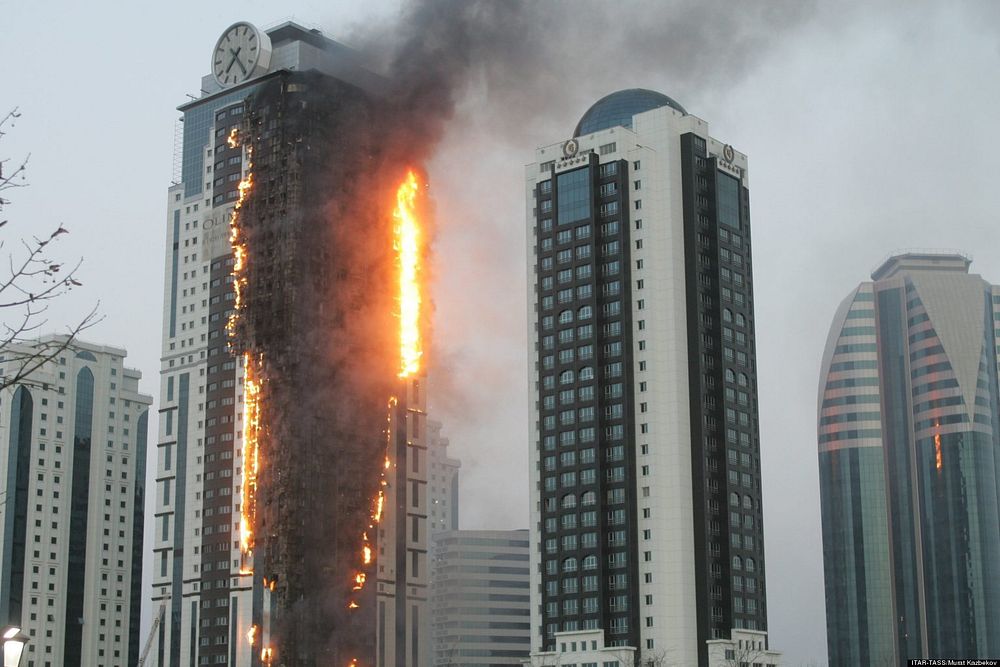
The discussion on how to solve façade flammability problem has begun. And it’s already a while now. Is itsolved? Definitely not. There some ideas discussed: some are good but too expensive – some: cheap, but unreal. Some fire safety specialists offer completely radical measure, like total change of flammable façade tiles for every high rise building in UAE. I’d say it’s a brilliant idea... but! Who wants to pay for that? Investor? Architect? General contractor? Civil Defence?? Most probably no one. The amount of such an investment is huge and is rather impossible to get. The fact that authorities had no control on construction product flammability till 2013 gives not a big “freedom of moves” to require total change of façade tiles.
The second idea fire society hears is a method of fire – proofing the tiles by spraying them with some sort of intumescent coating. This could be a good idea the coating would not change the colour or texture of the façade tiles. It should be totally permanent or it becomes a nightmare of architect or investor. Also no one knows how the high temperatures could affect the coating. Air temperature can rise up to 5000 Celsius, it can almost double up on a surface of the high rise building façade. What would be the long life of such a coating before respraying it.
The third option which is discussed – vertical fire shutters or curtains for windows. Fire curtains are a brilliant idea. I do believe in this system, it is very convenient and reliable. It closes the window when the smoke alarm system is triggered so when fire starts inside the room, it stays because the fire shutter keeps it away from getting out on the façade. There are only two minuses of this kind of a system. First – it doesn’t guard from outside external source of ignition – only from inside. The second – budget for securing all the glazing in the building would probably be bigger than the tiles-exchange program.
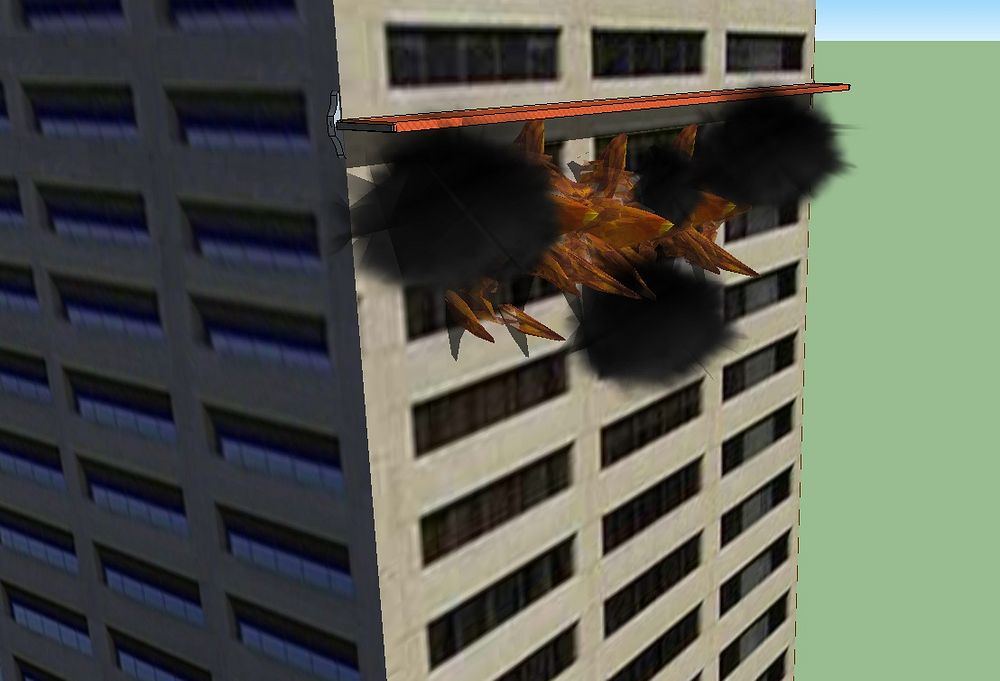
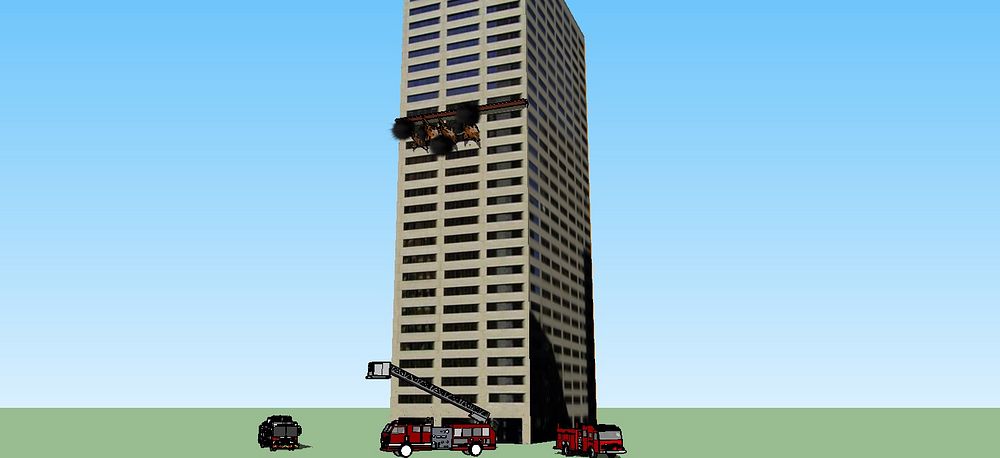
What I’m really happy for is that Europe fire safety society is looking with empathy towards UAE colleagues and though this kind of problem is not so common at least for North Europe, everyone’s trying to discuss and look for some kind of opportunities. The sad side of it is that all the measures are more or less expensive and require strong will to execute them in reality. Though world oil prices are low, the governments and investors are worried the security level has to be returned. People have right to be aware that they are not left alone with flammable facades.
All these conferences, work groups and discussions refreshed an old idea when kind of a solution was made of architectural concrete projection which was made as a barrier for façade fires. It looked bad enough and was forgotten. Though in some eastern Europe countries’ fire codes it is still mention as a solution (concrete projection with fire resistance of E60) for allowing shortening the height of façade spandrel.
This gave me an idea of testing an outside horizontal fire curtain which could be used as a measure for deattaching the flames from surface of façade and creating barrier which could stop fire spread and gave enough time for firefighters to stop and extinguish it totally. This kind of solution was also discussed during the façade safety conference in Lund, Sweden. The test with 2 lengths (300mm and 500mm) of façade projections showed that the 500 length projection effectively de-attaches the flame from surface of façade and successfully blocks it for almost an hour. No critical temperature was mentioned on the top of the projection, so that even a usual façade glass did no brake at all.
Thermocouples were placed on the surface of projection, 250, 500, 1000 and 2000mm upwards from façade projection.
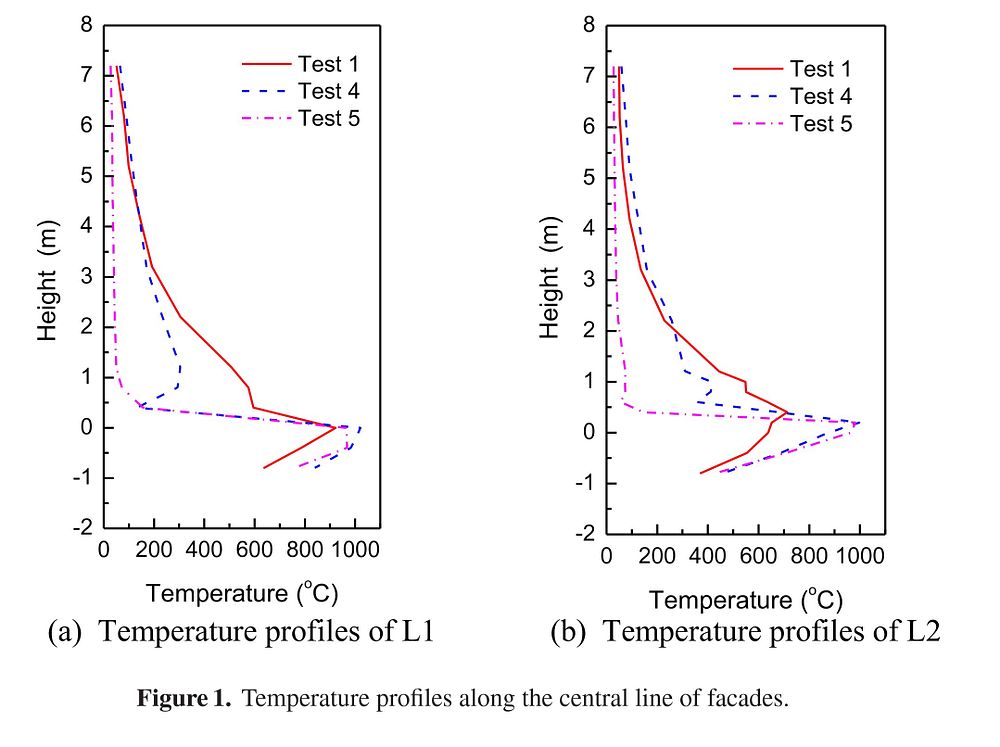
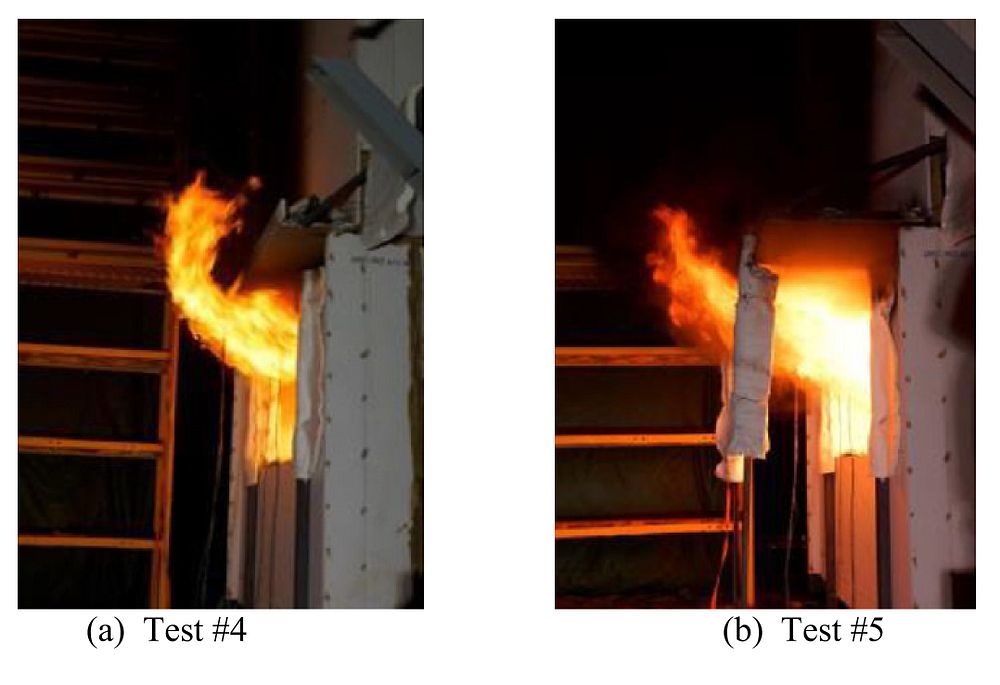
300mm length fire barrier has showed the temperature results of:
00mm – 10500C;
1000mm – 375-4000C;
2000mm – 280-2900C;
3000mm – 180-2000C;
500mm length fire barrier has showed the temperature results of:
00mm – 10500C;
1000mm – 80-900C;
2000mm – 70-800C;
3000mm – 60-700C;
Incredible! It was hard to believe that we have come so close to an idea which can actually save lives and be affordable for GCC and foreign investors. Using 500mm façade projection
The biggest challenge was to find out how to implement that in existing buildings.
Having a firefighter’s experience, I can assure that ………… a measure which can actually stop fire spread on façade for 30 – 40 minutes and keep it one place is a real treasure for rescue teams.
After a little joy moment, we come to reality. Due to strict thermo-isolation requirements in Northern Europe it is very difficult to implement such a system in existing building façade. Insulation thickness makes it impossible to install it. Well how about the facades of high rise buildings in GCC countries where cold is not a problem.
Our design team, together with façade installation companies came up to 3 methods: one on the ceiling (down side spandrel), in the middle of spandrel (replacing cavity barrier) and on the top. The fire curtain is rolled in a 200 × 200mm steel case so it does not require much space. “K+H” gave us some good ideas of opening such a textile roll able curtain, while keeping it firm and stable during a fire and wind.
As the façade fire curtain is not needed in every floor (we suggest to install it every 10 floors) it can also be installed in the technical floors.
The triggering of such a curtain has given lots of discussion. Who or what should trigger the device. Should it be a person or should it be some kind of detector? After lots of suggestions we came up the only the rescue squad chief can decide which floor/level fire curtains should open and which should be kept shut.
There are of course critics and are the biggest our pushers which say that this curtain cannot be used to high wind speed in upper levels and that’s true, that’s why we developed reinforcement for the curtains. And even if the curtain will be torn after 20 min of use, it will be done its job. The fire was stopped and civil defence teams can extinguish it. Then we can always think how the fire would develop if there is no such a curtain.
It is the first time I decide to share this information officially to fire safety community about the developed product and I know there are some things which can be upgraded. Please share your comments, ideas, critics and fears. Together we can achieve that Dubai’s legend of safety will be kept and people can feel safe again.
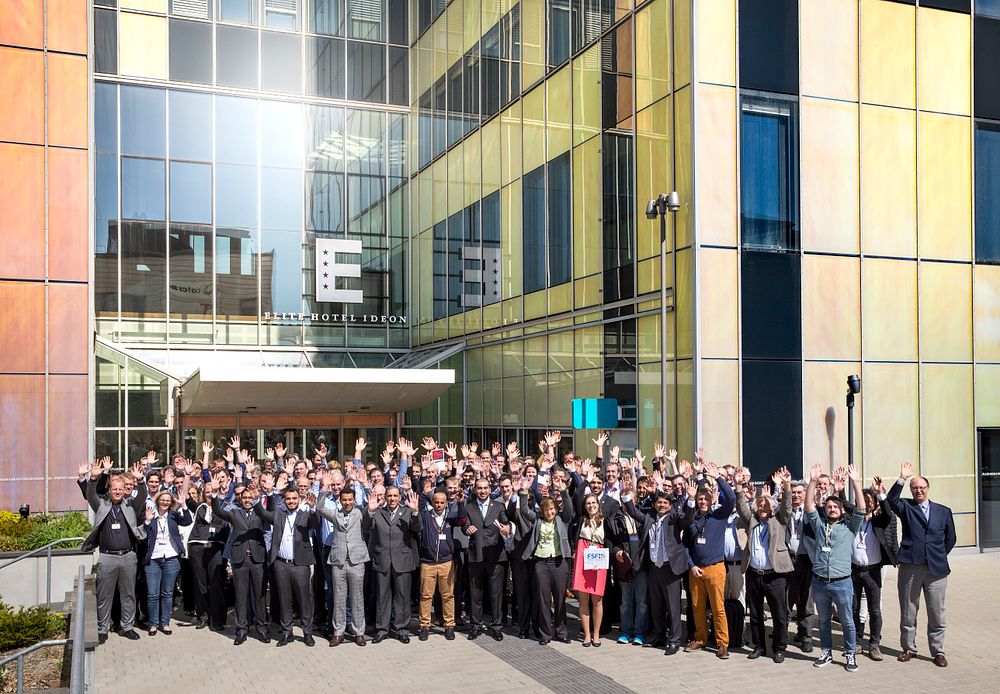
Related links
Topics
- Building industry, industry issues
Categories
- fogo
- accidents
- facades
- inovative
- technology
- fire protection
